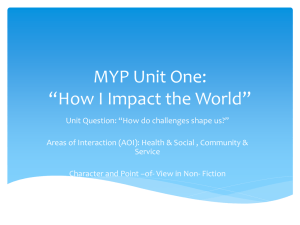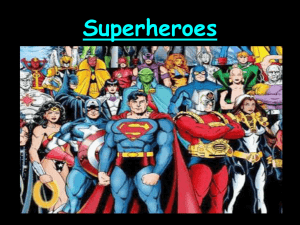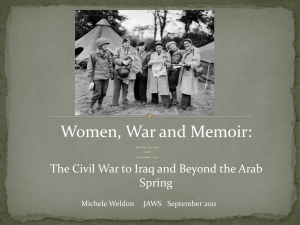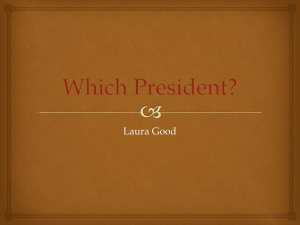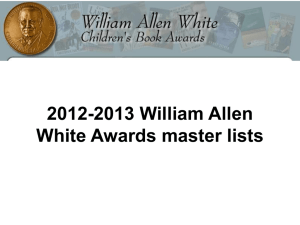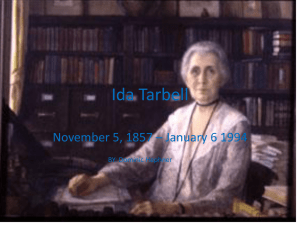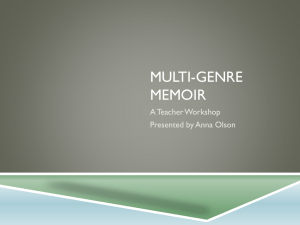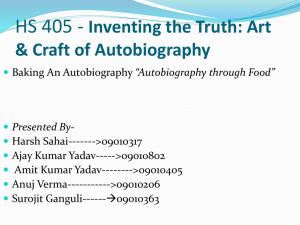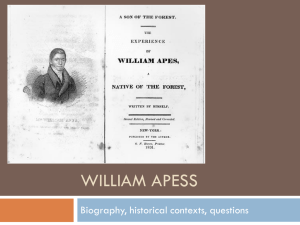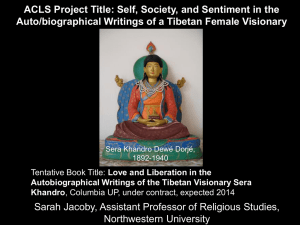Biography, Autobiography, and Memoir
advertisement
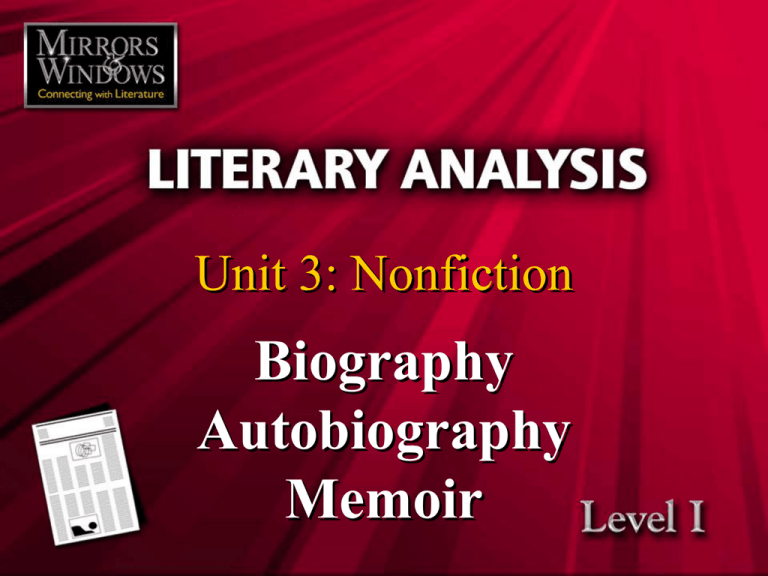
Unit 3: Nonfiction Biography Autobiography Memoir Truth is not only stranger than fiction, it is more telling. To know that a thing actually happened gives it a poignancy, touches a chord, which a piece of acknowledged fiction misses. —W. Somerset Maugham <skip intro> What is nonfiction? • Nonfiction is writing about real – – – – – lives places things events ideas What are the most popular forms of nonfiction? • The most popular forms of nonfiction are – – – – – – biographies autobiographies memoirs essays speeches informational text What are your favorite types of nonfiction? • • • • Biographies Self-help books Autobiographies Newspaper, magazine, and Internet articles • Eyewitness accounts of newsworthy events • Essays • Memoirs What are the purposes of nonfiction? • To entertain readers • To teach readers by providing information, explanation, or instruction • To persuade readers to understand a particular viewpoint • To offer readers advice • To present snapshots of different life experiences for readers Biography, Autobiography, and Memoir • There are many different types of nonfiction. • Biography, autobiography, and memoir tend to be favorites among preteens and teenagers. • Among the most popular are books about – – – – athletes entertainers/recording artists adventurers historical/political figures Biography is history seen through the prism of a person. —Louis Fischer Why do you think biographies are such a popular form of nonfiction? How do biographies provide insight into history? Biography • A biography is the story of a person’s life told by another person. • Biographies are often written about wellknown people. • Biographies can also be written about littleknown people who have had interesting lives. • In all cases, biographers must select the best details to explain what is remarkable about their subjects. Aside from fame, what characteristics or life experiences might make a person an interesting subject of a biography? Characteristics/Experiences of an Interesting Biography Subject Primary Sources • Writers of biographies rely on many sources to tell the story of a person’s life. • Primary sources provide first-hand accounts of the life experiences of the subject. • Primary sources of information – are original – come straight from individuals who experienced, witnessed, or participated in an event or activity Primary Sources • Examples of primary sources include – – – – – – – letters diaries/journals interviews photographs, films, or artwork autobiographies business papers court documents Secondary Sources • Primary sources are not the only sources used to create a biography. • Secondary sources are second-hand accounts of the life experiences of the subject. • Secondary sources of information – are based on the interpretation and analysis of primary sources – are written by people who were not involved in the life experiences of the subject Secondary Sources • Examples of secondary sources include – – – – – – interviews other biographies specialized dictionaries encyclopedias textbooks newspaper and magazine articles Example of Biography • To write the biography of Abd al-Rahman Ibrahima, author Walter Dean Myers used both primary and secondary sources. • What types of primary and secondary sources might Myers have drawn from in writing the passage on the next slide? Example of Biography Ibrahima was inspected on the shore, then put into irons and herded into a small boat that took him out to a ship that was larger than any he had ever seen. The ship onto which Ibrahima was taken was already crowded with black captives. Some shook in fear; others, still tied, fought by hurling their bodies at their captors. The beating and the killing continued until the ones who were left knew that their lot was hopeless. —from “Abd al-Rahman Ibrahima,” by Walter Dean Myers Organization of Biographies • Biographies are typically organized chronologically—the events are described in the order in which they happened. – This format helps show how a person’s life experiences affect him or her. • “Abd al-Rahman Ibrahima” follows a chronological format. – Myers uses phrases that move readers through Ibrahima’s life, such as “when he reached twelve” and “he was in his mid-twenties when….” Understanding Biographies • A graphic organizer, such as a Time Line or Sequence Map, can help readers to better understand biographies. – A Time Line can help readers remember the chronological order of the events. – A Sequence Map can help readers follow and connect those events. • Consider the sample Sequence Map on the next slide. • The Sequence Map below has been filled out for “Abd al-Rahman Ibrahima.” Ibrahima is born in Fouta Djallon, Guinea. As a young man, he meets Dr. John Cox. In his 20s, he is forced into slavery in the U.S. Twenty years later, Cox and others try to help. Ibrahima and his wife are eventually freed. In 1829, Ibrahima dies while traveling home. Autobiography and Memoir • An autobiography is the story of a person’s life, written by that person. – This written account includes all or most of the significant experiences of the individual’s life. • A memoir is also the story of a person’s life, written by that person. – This written account extracts and focuses on one or more significant experiences of the individual’s life. Organization of Autobiography and Memoir • Like biographies, autobiographies typically follow chronological order. • Memoirs, however, may have less structured organizations. They often use – flashbacks, which interrupt time sequence and present events that occurred earlier or in the past and – foreshadowing, which provides a clue to events that will occur in the future or later in the story Example of Autobiography • In her autobiography “Mi Familia,” Carmen Tafolla flashes back to a time before she was born to explain who she is. My roots in New Mexico go back for centuries—espanoles arriving in the 17th century to indios parientes already there. The move to Texas happened between 1848 and 1865 (a few wars got in the way, causing strange demographic reshuffles). My great-great-grandmother was already there, and had a seamstress shop in “downtown” San Antonio; my great-grandmother washed clothes in the San Antonio River…. She later married two (one at a time) Confederate veterans. —from “Mi Familia,” by Carmen Tafolla Example of Memoir • In his memoir “The Jacket,” author Gary Soto describes a few years of his childhood. • Soto feels that these years were greatly affected by the ugly green jacket he had to wear at the time. • To keep track of the major events in an autobiography or memoir, readers can use a Sequence Map or a Time Line. • This Time Line outlines the events that Soto describes in his memoir. Gary tells his mother he wants a black leather biker jacket. Gary’s mother buys him am ugly green jacket that is too big. Gary’s dog rips an Lshaped tear in the jacket’s sleeve. Gary wears the jacket to school and gets a D on a math test. Gary gets bad grades and no girls like him; he blames the jacket. The jacket becomes too small; the Lshaped rip gets bigger. Gary cries and asks his mom for a new jacket; she says no. Gary seems to learn to accept the jacket, but he still doesn’t like it. If you were to write an autobiography, what major events would you want to include? Place them on the Time Line below. SUMMARY: Biography, Autobiography, and Memoir • Whether they are reading a biography, an autobiography, or a memoir, readers can – find out more about a person’s life – learn more about a person’s character – gain insight into themselves and the world around them
